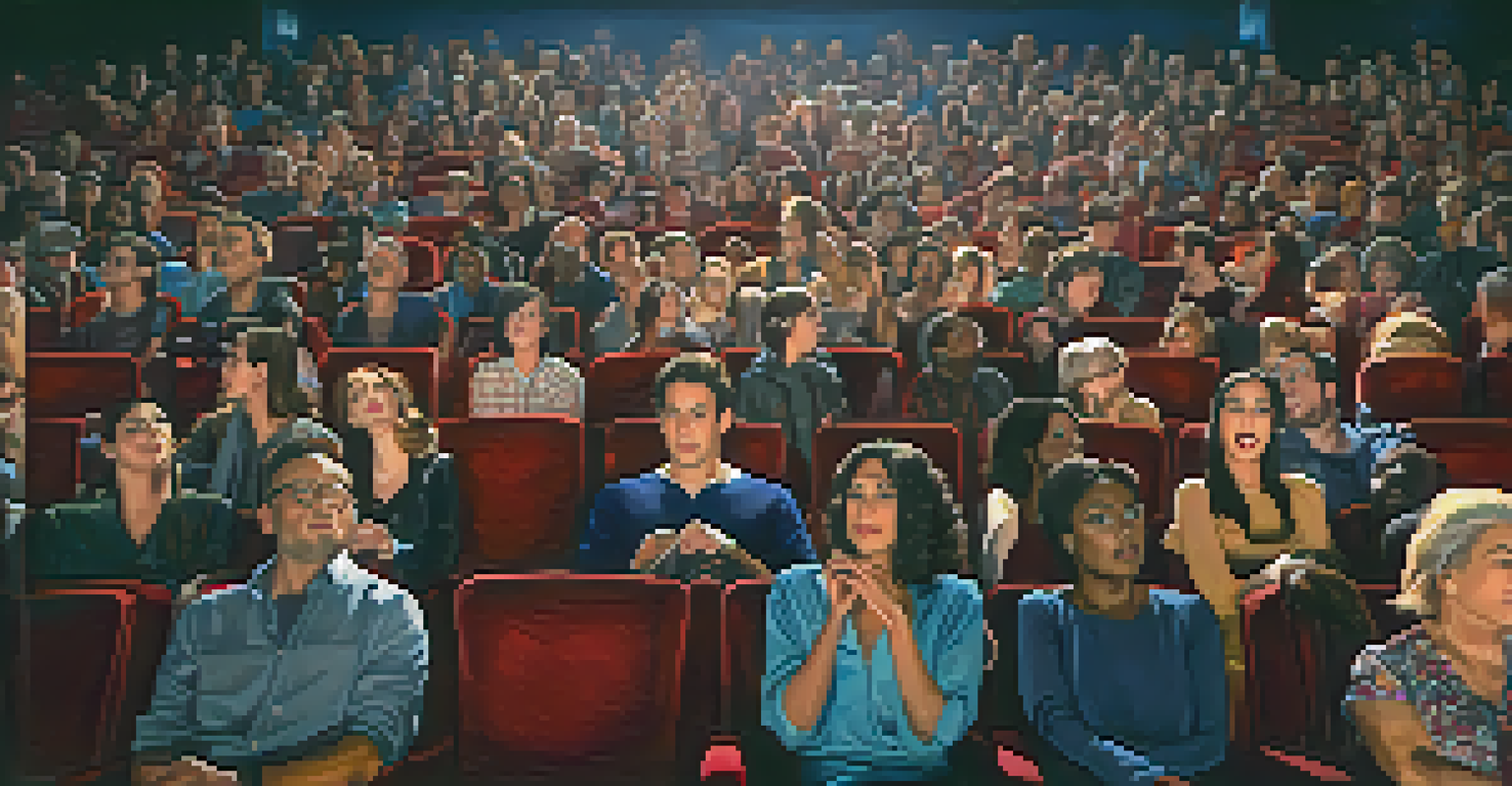Diversity in Casting: The Role of Directors in Inclusion

Understanding Diversity in Casting and Its Importance
Diversity in casting goes beyond simply filling roles; it reflects the rich tapestry of our society. When filmmakers embrace diverse actors, they bring forth stories that resonate with a broader audience. This inclusion not only enriches the narrative but also promotes empathy and understanding among viewers.
Diversity is being invited to the party; inclusion is being asked to dance.
Imagine a movie that exclusively features characters of one background. While it may tell a compelling story, it lacks the multifaceted perspectives that can make a film truly relatable. By showcasing a variety of voices, directors can create more authentic and engaging experiences for audiences.
In today's world, audiences are increasingly seeking representation on screen. They want to see themselves, their friends, and their communities reflected in the stories being told. This demand for diversity is not just a trend; it's a fundamental shift in the industry that directors must acknowledge and embrace.
The Director's Influence on Casting Choices
Directors hold a significant amount of power when it comes to casting decisions. They set the tone for a production and have the ability to champion diverse talent in ways that can reshape industry standards. By consciously choosing actors from various backgrounds, directors can challenge the status quo and inspire change.

For instance, think of a renowned director who pushes for a cast that reflects a range of ethnicities, genders, and abilities. This not only leads to richer storytelling but also encourages other filmmakers to follow suit. Directors can act as trailblazers, demonstrating that diversity is not just an option, but a necessity.
Diversity Enriches Storytelling
Embracing diverse casting not only reflects society but also creates more authentic and relatable narratives.
However, it's crucial for directors to recognize their responsibility in these decisions. They must understand the implications of their choices and strive to ensure that their cast reflects the world around them. This awareness can lead to more authentic storytelling and a greater impact on societal attitudes.
Addressing Barriers to Diverse Casting
Despite the growing awareness of the need for diversity, barriers still exist within the industry. Stereotypes, typecasting, and limited access to opportunities often hinder the inclusion of underrepresented groups. Directors must actively work to dismantle these barriers to create a more equitable casting landscape.
The beauty of the world lies in the diversity of its people.
Consider the challenge of typecasting, where actors are often pigeonholed into specific roles based on their ethnicity or background. This not only limits the actors' opportunities but also constrains the stories that can be told. Directors can combat this by seeking out talent that defies these stereotypes and showcases their versatility.
Moreover, creating a diverse casting pool requires intentionality in outreach and collaboration. Directors can partner with agencies that prioritize diverse talent and seek out new voices in their communities. By doing so, they can cultivate an environment where everyone has a chance to shine.
The Role of Audiences in Promoting Inclusion
Audiences have a powerful voice when it comes to advocating for diversity in casting. By supporting films that feature diverse casts, viewers can send a clear message to the industry about their preferences. This demand for representation can compel directors and producers to prioritize inclusion in their projects.
For example, when a film with a predominantly diverse cast performs well at the box office, it serves as a tangible example for other filmmakers. It demonstrates that diverse stories resonate with audiences, encouraging more directors to take similar risks in their own projects. Audience engagement can spur a domino effect of change.
Directors Drive Change in Casting
Directors have the power to reshape industry standards by championing diverse talent and challenging stereotypes.
Additionally, social media has become a platform for discussions about representation in film. Viewers can share their thoughts and experiences, amplifying the conversation around diversity. Directors who pay attention to these discussions can gain valuable insights into the expectations and desires of their audience.
Case Studies of Successful Diverse Casting
Looking at successful films that embraced diversity can provide valuable lessons for directors. Take 'Black Panther,' for example, which not only featured a predominantly Black cast but also celebrated African culture in a way that resonated globally. This film's success highlighted the potential of diverse storytelling.
Another example is 'Crazy Rich Asians,' which broke box office records while showcasing an all-Asian cast. This film not only entertained but also brought much-needed visibility to Asian representation in Hollywood. Directors can learn from these successes that diverse casting isn't just a moral imperative; it can also lead to commercial success.
These case studies illustrate that when directors take bold steps toward inclusive casting, the results can be transformative. They inspire other filmmakers to think outside the box and consider the wealth of talent available in underrepresented communities.
Collaborating with Diverse Talent Behind the Scenes
Diversity in casting shouldn't stop at the actors; it should extend to the entire filmmaking process. Directors can foster inclusivity by collaborating with diverse writers, producers, and crew members. This holistic approach ensures that multiple perspectives are represented at every stage of production.
For instance, a diverse writing team can bring unique cultural insights that enrich the story being told. When directors prioritize diverse voices behind the camera, they create a more robust creative environment that ultimately leads to better storytelling. This collaborative effort can enhance the authenticity of the film.
Audiences Influence Representation
Viewers can advocate for diversity in casting by supporting films with inclusive casts, sending a strong message to the industry.
Moreover, these collaborations can break down barriers and create pathways for underrepresented talent in the industry. Directors who champion inclusivity behind the scenes can help cultivate a new generation of filmmakers who will continue to advocate for diversity in their own work.
The Future of Diversity in Casting and Directing
As conversations around diversity continue to evolve, so too does the role of directors in shaping the future of casting. The industry is slowly moving toward a more inclusive landscape, but there's still much work to be done. Directors play a critical role in steering this change and setting new standards for representation.
Looking ahead, we can expect to see an increasing emphasis on diversity in casting as audiences demand more authentic stories. Directors who embrace this shift will not only enhance their own work but also contribute to a more equitable industry. The future is bright for those who prioritize inclusion.

Ultimately, the journey toward diversity in casting is ongoing. By recognizing their influence and making conscious decisions, directors can help create a film industry that reflects the richness of our diverse world. Together, they can pave the way for stories that inspire, connect, and resonate with all audiences.